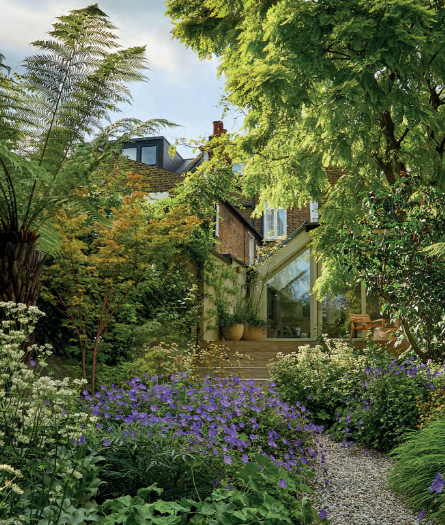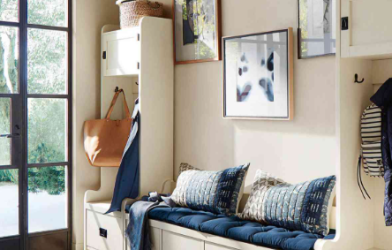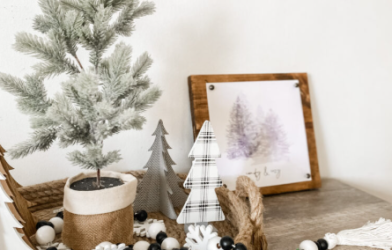Subtotal $0.00
Designing a modified meadow has proven to be both challenging and rewarding. Often referred to as meadowscaping, this trend involves replacing traditional lawns with a native, slightly wild, prairie-inspired garden. However, my version of a modified meadow includes a few personal touches that make it stand out from the traditional idea, thus earning it the “modified” label.
After four years of trial and error—moving plants around and experimenting with different varieties—this once-disliked area of my garden has become my absolute favorite. It’s now a space I walk through several times a day, always discovering something new and exciting.
Recently, Garden Gate Magazine filmed a video of my garden, and many new blog subscribers have asked me to share the details of how I created my meadow. I’m happy to provide a deeper look into this process and share the key elements that made it a success.
Two Key Goals for My Meadow Garden
- Attracting Pollinators and Wildlife
This area of my garden is designed to support a variety of pollinators and wildlife. I’ve included a diverse range of plants to make this happen, though my husband often jokes that I’ve planted “twice as much as needed.” But I think more is always better when it comes to supporting nature! Pollinators love it, and it’s rewarding to see them thriving in the space. From bees to butterflies, the garden serves as a sanctuary for these important creatures. - Capturing Rainfall
Another important feature I wanted to incorporate was rainwater retention. In the same way that a meadow collects water, I designed a depression at the lowest point of my garden, surrounded by a berm, to help capture and contain rainfall. This method allows rain to slowly seep into the ground, nourishing the plants. I also incorporated deep-rooted meadow plants that help improve soil structure and increase the water infiltration rate.
What Makes My Meadow “Modified”
While meadows typically peak in spring and summer, I wanted my garden to look appealing year-round, especially during the mild winters in my zone 9 climate. Traditional meadows, with their annual grasses and wildflowers, tend to fade in the colder months. To address this, I introduced non-traditional plants that offer interest throughout the year, particularly in winter.
For example, some plants in my garden bloom in winter, providing an early food source for pollinators. I’ve seen black-tailed bumblebees enjoying the flowers of grevillea and American lady butterflies feeding on my rosemary ‘Mozart’ during the cooler months. These plants not only add beauty but are critical for wildlife during the winter transition.
Incorporating Seating and Focal Points
Although my meadow has a natural, wild appearance, I still wanted it to feel integrated into the overall garden. I added a small seating area, which is a nice contrast to the wilder parts of the garden. A bench surrounded by informal pathways invites visitors to pause and enjoy the space. The concrete faux-bois bench blends perfectly with the natural surroundings and allows guests to experience the garden at eye level, feeling immersed in the greenery.
Several focal points are scattered throughout my meadow to maintain interest. One of my favorite features is a birdhouse built by my friend Freeland Tanner, which is used by birds every spring. Additionally, I’ve added tuteurs throughout the garden. These structures support climbing sweet peas in spring, and once the sweet peas are done blooming, they provide support for ‘Henry Eilers’ rudbeckia, which towers over the space.
Unexpected Plant Selections
Meadows typically have a mix of grasses and wildflowers, with a heavier emphasis on grasses. However, I wanted to create a more balanced design, so I shifted the ratio to favor perennials and evergreen plants, emphasizing year-round interest over seasonal blooms. In my modified meadow, the plant selection includes both native and non-native species that are drought- and deer-tolerant, as well as adaptable to my climate.
I’ve chosen plants like Echinacea pallida, Calamagrostis ‘Overdam,’ and Penstemon ‘Margarita BOP’ for their beauty and resilience. I also selected plants like Halimiocistus wintonensis ‘Merrist Wood Cream’ and Anigozanthos ‘Tequila Sunrise’ for their striking colors and textures. While I incorporate non-natives, I ensure they are non-invasive and provide benefits to local wildlife.
Managing the Chaos of a Meadow Garden
One of the challenges of a meadow design is controlling the potential chaos that comes with tall, wispy plants. These types of plants are meant to withstand wind and dry conditions, but when mixed together, they can create a wild, overgrown look that doesn’t suit every garden. To keep my meadow looking curated, I added bold foliage plants like Stachys ‘Primrose Heron’ and the artichoke plant with its large, blue-green leaves. These plants help balance the airy, tall plants and provide structure.
Contrast is another important design element in my garden. I’ve worked to create distinct contrasts in foliage, flower shapes, and bloom times. By focusing on contrasting textures and colors, I prevent the garden from feeling monotonous and make each plant stand out. For example, I used contrasting flower shapes such as the round blooms of craspedia (Billy Buttons) alongside the flat, umbel-shaped flowers of cenolophium denudatum.
Creating Color Echoes
While meadows often have large swaths of similar plants, I wanted to use smaller groupings of plants to create a sense of unity without taking up too much space. To bring harmony to the diverse range of plants, I created color echoes throughout the garden. For instance, I linked plants through the use of maroon and dark red hues, as seen in the flowers and foliage of various species.
By creating these small drifts of similar plants, I achieved the expansive feel of a traditional prairie garden while making the space feel cohesive. The use of color echoes—whether through warm tones like gold and yellow or cooler shades like maroon—helps tie the garden together and adds a rhythm that brings everything into harmony.
Through careful planning, plant selection, and thoughtful design, my modified meadow has become a beautiful and functional part of my garden. The result is a dynamic and visually appealing space that attracts wildlife and supports a wide variety of plants year-round.












